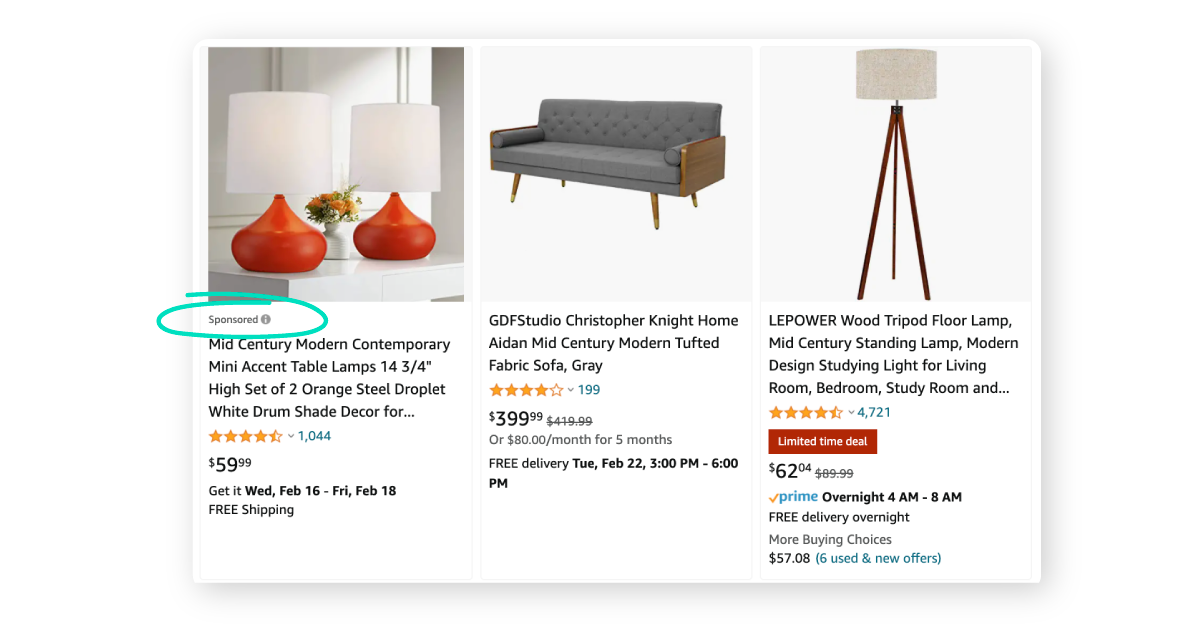
The next generation of retail media is here, and the right program has the power to drive incremental revenue for your digital marketplace while enhancing the buyer experience and boosting sales for your suppliers. Retail media is an established e-commerce advertising approach through which you can monetize your marketplace to drive increased revenue.
Given COVID-19’s exponential impact on global e-commerce, providers, publishers, budgets, and overall activity are all growing at a swift pace; data from eMarketer indicates that e-commerce sales will exceed $1 trillion in 2022. If you’re ready to capitalize on that growth, retail media is the perfect avenue. It allows advertising within your digital marketplace by brands who directly sell products through you.
In this article, marketplace publishers will learn the ins and outs of retail media, and together we’ll answer the following questions: What is retail media? Why does retail media matter? And who benefits from a retail media program?
What is Retail Media?
Retail media is a term used to describe ads intended to help retailers and e-commerce companies reach consumers at various stages of their buying journey, with the ultimate goal of selling products and reaching new customers. Ads in a retail media program can appear on the home page, category page, search page, or product detail page. Retail media is an advertising outlet growing at an exponential pace, with total spending estimated near $23.92 billion in 2021 (eMarketer). Perhaps the foremost example of retail media is found on Amazon.com, in the form of Amazon Sponsored Products.
Why Does Retail Media Matter?
Since COVID-19 transformed the global retail industry, e-commerce has boomed. E-commerce sales in the U.S. alone are expected to surpass $1 trillion in 2022 – an estimate that wasn’t originally anticipated until 2024 (eMarketer). Even more, ad spend on e-commerce sites is expected to grow 13.7% in 2022 over 2021 (eMarketer).
The accelerated growth of e-commerce sales and increased ad spend going to e-commerce sites combine to provide a unique opportunity for marketplace operators to capitalize on increased e-commerce sales and ad spending, today.
Historically, the digital marketing ecosystem has relied on cookies to deliver digital advertising. With increased privacy laws and the degradation of the third-party cookie, marketplace operators must give their sellers new ways to optimize the first-party data their marketplace offers. Marketers are similarly looking for ways to capitalize on first-party data, with 60% of marketers saying that the discontinuation of third-party cookie support will increase their spending and emphasis on use of first-party data (IAB).
The shift from in-store to online shopping combined with the death of the third-party cookie means retailers need to double down on the digital shelf. Retail media programs give marketplace operators a new revenue stream by monetizing their website traffic and first-party data, while providing sellers an effective way to advertise to relevant shoppers at the point of sale.
Who Benefits From Retail Media?
Think only big, multi-brand e-commerce site operators stand to benefit from retail media, whether in-house or third-party? Not true! Retail media programs can create a net positive for the entire ecosystem, enhancing digital experiences for both sellers and buyers while maximizing revenue-per-user for operators. Retailers Retailers can see more product sales because sellers are more engaged in the marketplace ecosystem and buyers can find highly relevant products more quickly. This generates additional sales, which combined with the secondary ad revenue source, can boost overall marketplace revenue.
Suppliers
Through an effective advertising option, suppliers can reach the right customers for their products more efficiently. A first-party advertising approach enables suppliers to promote their brand ahead of competitors, while remaining compliant with data regulations. This maximizes their ad spend, encouraging sellers to invest more time and effort into the marketplace ecosystem.
Shoppers
Finally, shoppers can enjoy a more seamless shopping experience.
Strong retail media presents customers with highly relevant products, without inundating them with too many distracting ads. With an effective first-party ad solution, shoppers can find and compare competing brands more easily, improving the shopping experience while protecting their personal data.
In Conclusion
Brands of all sizes can see vast growth and improvement from the addition of these solutions. It’s true, while prominent players like Amazon tend to build their own ad technology in-house and design everything to work holistically with their e-commerce platform, most other retailers don’t have the scale to build out and maintain a complete retail media platform.
Those retailers choose to use third-party ad tech providers to enter the retail media game.
Ready to discuss what a retail media program can do for your business? Let the experts at Koddi give you all the details.
You may be interested in
GET IN TOUCH
Ready to get started?
Don’t let your brand get lost in the noise. Partner with Koddi to unlock the power of commerce media and transform the way you engage with your customers. Our team of experts is here to help you navigate complexities and develop a strategy that drives results — no matter what industry – in as little as 45 days.
